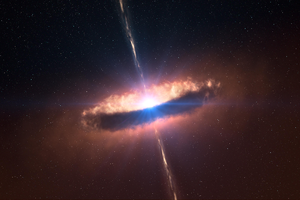Difference between revisions of "Protostar"
| Line 18: | Line 18: | ||
:[https://www.amazon.co.uk/gp/product/019835939X/ref=as_li_tl?ie=UTF8&camp=1634&creative=6738&creativeASIN=019835939X&linkCode=as2&tag=nrjc-21&linkId=57e96876985fc39b1a3d8a3e3dc238b6 ''Protostars, pages 232-233, GCSE Physics; Third Edition, Oxford University Press, AQA ''] | :[https://www.amazon.co.uk/gp/product/019835939X/ref=as_li_tl?ie=UTF8&camp=1634&creative=6738&creativeASIN=019835939X&linkCode=as2&tag=nrjc-21&linkId=57e96876985fc39b1a3d8a3e3dc238b6 ''Protostars, pages 232-233, GCSE Physics; Third Edition, Oxford University Press, AQA ''] | ||
:[https://www.amazon.co.uk/gp/product/1782945970/ref=as_li_tl?ie=UTF8&camp=1634&creative=6738&creativeASIN=1782945970&linkCode=as2&tag=nrjc-21&linkId=a120d24dcc7cc7a58192069a3aafc1d2 ''Protostars, pages 318, 319, GCSE Physics; The Complete 9-1 Course for AQA, CGP, AQA ''] | :[https://www.amazon.co.uk/gp/product/1782945970/ref=as_li_tl?ie=UTF8&camp=1634&creative=6738&creativeASIN=1782945970&linkCode=as2&tag=nrjc-21&linkId=a120d24dcc7cc7a58192069a3aafc1d2 ''Protostars, pages 318, 319, GCSE Physics; The Complete 9-1 Course for AQA, CGP, AQA ''] | ||
| + | |||
| + | ====Edexcel==== | ||
| + | |||
| + | :[https://www.amazon.co.uk/gp/product/1292120223/ref=as_li_tl?ie=UTF8&camp=1634&creative=6738&creativeASIN=1292120223&linkCode=as2&tag=nrjc-21&linkId=068ecf40278c32406a7f1c6e66751417 ''Protostars, page 122, GCSE Physics, Pearson Edexcel ''] | ||
| + | :[https://www.amazon.co.uk/gp/product/1782948163/ref=as_li_tl?ie=UTF8&camp=1634&creative=6738&creativeASIN=1782948163&linkCode=as2&tag=nrjc-21&linkId=0fdbfd5dd397d6e24a9dfb250f08587f ''Protostars, page 187, GCSE Physics, CGP, Edexcel ''] | ||
Latest revision as of 15:51, 27 November 2019
Key Stage 4
Meaning
A protostar is a star that has just formed from a nebula but is not yet hot enough for fusion to occur in its core.
About Protostars
- The collapse of the nebula to form a protostar transfers energy from the gravitational potential energy store of the gas and dust to the thermal energy store of the gas and dust, so it glows.
- The core of the protostar is not yet hot enough to undergo nuclear fusion.
- There is a disk of gas and dust around the protostar which will eventually form the planetary system.
References
AQA
- Protostar, page 280, GCSE Physics; Student Book, Collins, AQA
- Protostars, page 100, GCSE Physics; The Revision Guide, CGP, AQA
- Protostars, page 251, GCSE Physics, Hodder, AQA
- Protostars, pages 232-233, GCSE Physics; Third Edition, Oxford University Press, AQA
- Protostars, pages 318, 319, GCSE Physics; The Complete 9-1 Course for AQA, CGP, AQA
